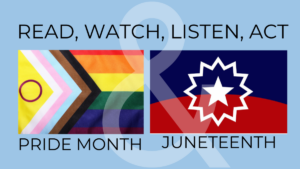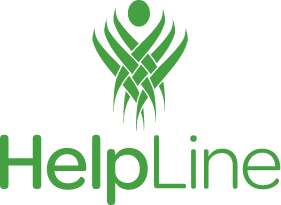Celebrating Liberation and Love: The Intersection of Juneteenth and Pride Month

As June unfolds, it brings with it two significant celebrations: Juneteenth and Pride Month. Both commemorate profound struggles for freedom, equity and inclusion, making June a powerful month of reflection, celebration, and advocacy. The intersection of these events offers a unique opportunity to explore the shared histories and ongoing resistance to oppression of Black and LGBTQIA+ communities. In the face of movements and legislation that seek to strip away the basic right to be, these celebrations center us in justice and joy!
Juneteenth: A Celebration of Freedom
Juneteenth, observed on June 19th, marks the day in 1865 when enslaved Texans were finally informed of their liberation when 2,000 union troops, under the leadership of General Gordon Grange, arrived in Galveston Bay, Texas. The army announced that the more than 250,000 enslaved Black people in the state, were free by executive decree — two months after Robert E. Lee surrendered and ended the Civil War and two and a half years after the Emancipation Proclamation. Initially a Texan observance, Juneteenth has grown in prominence, now recognized as a federal holiday, this day of remembrance and celebration serves as a crucial reminder of the ongoing fight for racial justice and equity.
Pride Month: A Celebration of Identity and Rights
Pride Month commemorates the Stonewall Uprising in June 1969, a pivotal moment in the LGBTQIA+ rights movement. It is a time to honor the progress made towards equality, recognize the challenges that remain, and celebrate the diversity of the LGBTQIA+ community. Pride events, from parades to educational programs, highlight the importance of acceptance, visibility, and advocacy.
When thinking of Juneteenth’s impact on the civil rights movement, it is no wonder that Pride began, in part, with the determination of Black transgender (trans) and queer people.
Intersecting Struggles and Solidarity
The histories of Juneteenth and Pride Month are deeply intertwined. Many key figures in the civil rights movement were also advocates for LGBTQIA+ rights. For example, Bayard Rustin, a close advisor to Martin Luther King Jr., was an openly gay man who played a significant role in organizing the March on Washington in 1963. Similarly, the Stonewall Riots were led in part by African American and Latinx transgender women, Marsha P. Johnson, Miss Major Griffin-Gracy and Sylvia Rivera. These activists worked to continue the spirit of Juneteenth by calling for liberation from heteronormative regulations, and instead making space for them to live their truths freely and boldly, which is honored each year during Pride. Their bravery and activism were instrumental in galvanizing the LGBTQIA+ rights movement, demonstrating the interconnectedness of the fight for racial and sexual equality.
But Stonewall wasn’t the first instance of resistance.
Even before the Stonewall Uprisings, which occurred over several days in June 1969, LGBTQIA+ people, including many Black and Brown people, actively resisted government interference, state violence and interpersonal harm. Two years before Stonewall, law enforcement entered the Black Cat Tavern, intruding upon an LGBTQIA+ safe space and arrested patrons, which led to an organized protest. In 1966, at Compton Cafeteria, trans and non-binary individuals resisted police violence after vehement anti-trans harassment. And, ten years before Stonewall, the Cooper Donuts Riot was a relatively small uprising in Los Angeles in response to law enforcement’s harassment.
Figures like Lucy Hicks Anderson and Gladys Bentley offer up even more examples of early resistance within the trans community.
Current Challenges and the Path Forward
Despite progress, both Black and LGBTQIA+ communities continue to face significant challenges. Systemic racism, discrimination, and violence persist, often intersecting in ways that exacerbate the struggles of those who belong to both communities. Black LGBTQIA+ individuals face higher rates of unemployment, health disparities, and violence compared to their white counterparts. The American Civil Liberties Union cite that over 100 bills attacking transgender people have been introduced into state legislatures since 2020. Solutions and policies can’t create equitable outcomes until broader systems of racism, sexism, classism and trans-phobia are addressed. Thus, the intersection of Juneteenth and Pride Month also serves as a call to action. It reminds us that the fight for equality is far from over and that solidarity is essential. Supporting Black and LGBTQIA+ voices, businesses, and organizations are crucial in advancing both racial and LGBTQIA+ justice.
A Time for Celebration and Advocacy
In this month of dual celebrations, we have a unique opportunity to reflect on our collective history, celebrate our diversity, and work towards a more inclusive and equitable future. Let us recognize the shared struggles and the strength found in unity. And let us commit to continued advocacy, ensuring that the promise of freedom and equality extends to all.
Resource List:
Juneteenth
National Museum of African American History and Culture
Pride
